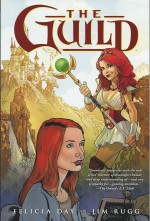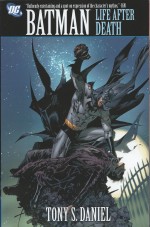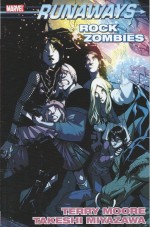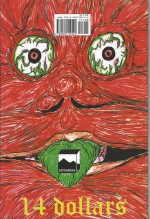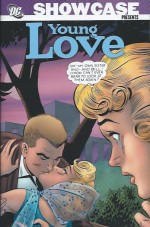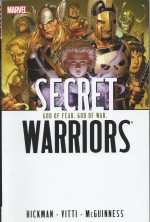
By Jonathan Hickman, Alessandro Vitti, Ed McGuiness, Tom Palmer & various (Marvel)
ISBN: 978-0-7851- 3865-5
Marvel’s very own immortal secret agent Nick Fury had in his time fought in every war since WWII, worked for the CIA and run numerous iterations of superspy agency S.H.I.E.L.D., generally finding over and again that nobody could be trusted – not to stay clean and decent – in a world of temptation or, worse yet, to never baulk at doing whatever was necessary to save the planet.
Too many times the spooks “on our side†became as debased as the bad guys in a world where covert agencies were continually exposed as manipulative, out-of-control tools of subversion and oppression.
The taste of betrayal and those seeds of doubt and mistrust never went away and following a succession of global crises – including a superhero Civil War – Fury was replaced as S.H.I.E.L.D. director.
His successor Tony Stark proved to be a huge mistake and after an alien invasion by Skrulls, the organisation was mothballed: replaced by the manically dynamic Norman Osborn and his cultishly loyal H.A.M.M.E.R. outfit. As America’s Director of National Security, the former Green Goblin and recovering psychopath instituted a draconian “Dark Reign†of oppressive, aggressive policies which turned the nation into a paranoid tinderbox and as the nation’s Top Fed he was specifically tasked with curbing the unchecked power and threat of the burgeoning metahuman community.
He was, however, also directing a cabal of the world’s greatest criminals and conquerors intent on divvying up the planet between them. The repercussions of Osborn’s rise (and inevitable fall) were felt throughout and featured in many series and collections throughout the entire fictive universe.
His brief rule also drastically shook up the entrenched secret empires of the planet, and his ultimate defeat destabilised many previously unassailable clandestine Powers and States…
Fury, a man driven by duty, fuelled by suspicion and powered by a serum which kept him vital far beyond his years, didn’t go away. He just went deep undercover and continued doing what he’d always done – saving the world, one battle at a time. From this unassailable unsuspected vantage point Fury picked his battles and slowly gathered assets and resources he’d personally vetted or built…
The indomitable freedom fighter had always known that to do the job properly he needed his own trustworthy forces and no political constraints. To this end he had long endeavoured to clandestinely stockpile his own formidable, unimpeachable army. Decades in charge of S.H.I.E.L.D. had provided him with mountains of data on metahumans from which he compiled “Caterpillar Files†on many unknown, unexploited, untainted potential operatives who might one day metamorphose into powerful assets…
His first move was to assemble a crack squad of super-human operatives. Team White initially comprised Yo Yo Rodriguez AKA Slingshot, Sebastian Druid, Jerry “Stonewall†Sledge, J.T. “Hellfire†James and Daisy Johnson, codenamed Quake, and the terrifyingly volatile Alexander: a 12-year old boy with incredible power.
The child Phobos was destined to become a true god and personification of Fear but until then his daily-growing divine gifts were Fury’s to use… if he dared…
In the aftermath of the wave of crises the old soldier had come across a truly shocking piece of intel: for most of his career, S.H.I.E.L.D. had been no more than a deeply submerged and ring-fenced asset of Hydra. All Fury’s world-saving triumphs had been nothing more than acceptable short-term losses for a secret society which claimed to reach back to ancient Egypt, secretly steering the world for millennia.
However since Osborn and the Skrull invasion had shaken things up so much, the old warhorse now had an honest chance to wipe out the perfidious faceless foe forever…
Hydra too had been badly damaged by the crisis, and as the dust settled Baron Wolfgang von Strucker sought to capitalise on the chaos to regenerate the cult in his own image, seizing all fallow assets, technology and even experienced operatives abandoned by friends and enemies alike…
To this end, Strucker co-opted breakaway factions of Hydra and convened a new hierarchy of deadly lieutenants loyal to him alone. However even with Viper, Madame Hydra, Kraken, Silver Samurai, The Hive and resurrected mutant ninja the Gorgon on board, the prospect of wedding super-science and corporate rapaciousness with ancient magic and millennial covert cabals was a risky ploy…
The rabid rapid expansion also gave Fury an opportunity to place one of his own deep within the organisation…
To further bolster his own relatively meagre forces, Fury reached out to selected old S.H.I.E.L.D. comrades and especially his former second-in-command Dum-Dum Dugan who had gathered up the most trustworthy agents and veterans into a private security agency – the Howling Commandos Private Military Company. Warriors to the last, they were all looking for one last good war and a proper way to die…
Some of them got their wish when the good guys launched a daring raid and stole three of the mothballed colossal flying fortress warships dubbed Heli-Carriers, laying the groundwork for an imminent, unavoidable and very public shooting war…
Written throughout by Jonathan Hickman, this second intriguing and complex espionage epic declassifies material from Dark Reign, The List and Secret Warriors #7-10 from 2009, and opens in stunning style with ‘I Know Who You Work For’ (illustrated by Alessandro Vitti) as Fury secures operating capital for his private war by sending the team to rob a bank – a decent, reliable, reputable financial institution which just happens to be a covertly owned corporate holding of Hydra…
The audacious act prompts Strucker to reach out to Osborn who in turn condescends to deal with Fury as an insulting, double-edged “favour†to the despised former Nazi war-criminal. Osborn’s greatest advantage is his own team of Dark Avengers: ferocious ersatz heroes masquerading as genuine, altruistic champions of justice. One of the most formidable is Grecian war-god Ares. The Olympian is also the father of Fury’s wild-card agent Phobos…
The terrifying celestial child is snooping in Fury’s office with older but no-wiser bad influence J.T. James when they intercept a distress call from ex-Avenger and former S.H.I.E.L.D. operative Black Widow. She needs extraction immediately but when “Fury†rendezvous with her and partner Songbird, the desperate agents are all ambushed by Osborn’s Thunderbolts – a penal battalion of super-villains, purchasing pardons by doing dirty jobs for the Federal government…
In New York, captured and confronted by the Security Czar in ‘I’m the Perfect Means to an End’, Fury is shot in the head and everybody thinks it’s all over – until Phobos climbs out of the undetectable Life Model Decoy (a trusty robot duplicate the S.H.I.E.L.D. Director has utilised for decades to save his life from assorted threats)…
The real Fury is actually in Virginia with another old operative.
John Garrett is 90% mechanical after years of dutiful service to his country but the cyborg is prepared to risk all he’s got left for the right cause…
Back in the Big Apple, Team White agents J.T. and new recruit Eden Fesi attempt a rescue but it’s Phobos who saves them all by confronting Osborn head-on – earning the grudging respect of Ares who lets them all go. It’s not a reprieve, though, just a decent head start…
The rest of the squad are with severely wounded team-mate Yo Yo Rodriguez – whose arms have been replaced with mechanical limbs – when Alexander, J.T. and Eden teleport home with Ares, the Dark Avengers and lots of H.A.M.M.E.R. grunts hard on their heels in ‘The Starting Point is Everything’. With the base automatically initiating a data-purge and self-destruct program, Team White stage a spectacular holding action allowing everyone to relocate to a safe house…
And in Virginia, Garrett begins investigating former S.H.I.E.L.D. op Seth Waters, now a big-wig in the Department of the Treasury and just possibly a life-long dedicated Hydra agent…
Ed McGuiness & Tom Palmer provide the interlude ‘Start the Clock End Game’ wherein Nick breaks into the heart of Osborn’s citadel to put the Security Director on notice even as Waters is exposed as an agent of long-dormant terrorist group and universal threat Leviathan.
With Fury as Osborn’s willing hostage, H.A.M.M.E.R. officers and Dark Avengers lead the savage interrogation but Waters has unsuspected resources and distractingly suicides – just as the immortal superspy intended – allowing Fury to escape from the lion’s den with invaluable intelligence and ‘Leviathan Technical Data’ (all the bases, maps, files and diagrams any conspiracy nut could ever need to untangle the web of intrigue all diligently laid out for our perusal).
‘There Will Always Be War’ wraps up this saga with the full history of Phobos, beginning with an ancient parable of a forgotten war between the gods of Greece and Japan, the crafting of god-killing weapons and rare, telling insights into how Ares and Alexander grew apart.
A secret deal between undying war god and immortal spy is revealed before the fearsome inescapable fate and cost of inheritance is at last made clear to the slowly-maturing future god of Fear…
To Be Continued…
This excellent exercise in tense suspense and Machiavellian manipulation also includes a stunning ‘Cover gallery’ by Jim Cheung as well as variant covers from McGuinness, Adi Granov, Frank Cho & Gerald Parel to supplement the wry, engagingly cynical, blackly comical, staggeringly over-the-top action and dazzling cloak-and-dagger conflicts: employing enough intrigue to bamboozle even the most ardent espionage aficionado, with the added bonus that far less knowledge of Marvel continuity is necessary to fully appreciate this particularly intense and engaging effort to the full.
© 2009, 2010 Marvel Characters, Inc. All rights reserved.


